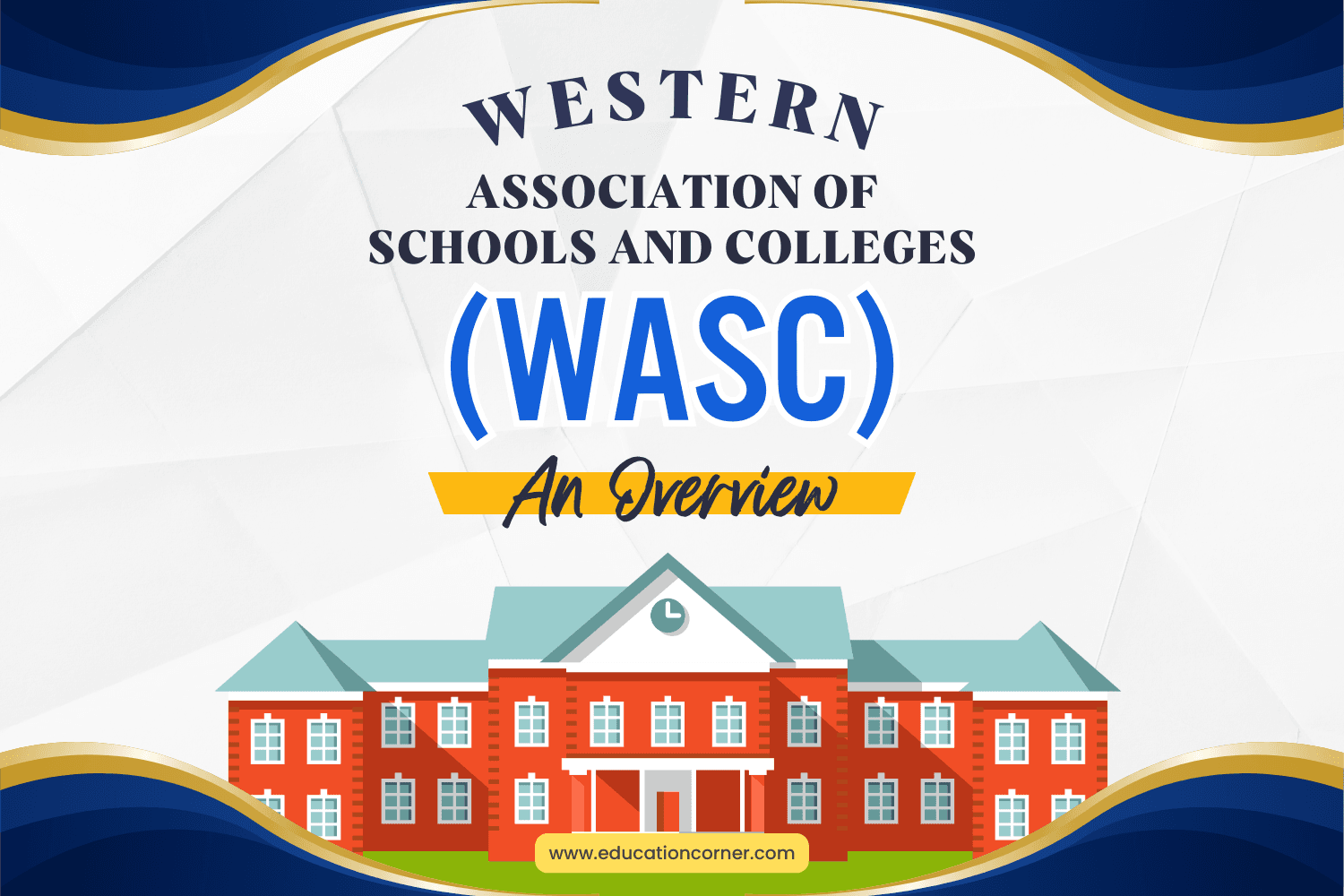The Western Association of Schools and Colleges (WASC) monitors, evaluates, and accredits education institutions in California, Hawaii, Guam, American Samoa, Marshall Islands, Federated States of Micronesia, Palau, and Northern Marianas Islands.
The WASC also evaluates schools in various locations throughout Asia and the Pacific. It is one of six regional accrediting agencies recognized by the U.S. Department of Education (DOE) and Council for Higher Education Accreditation (CHEA).
The WASC is subdivided into three distinct commissions. The Accrediting Commission for Schools evaluates any school below college level (K-12 schools, as well as adult institutions which do not grant degrees).
The Accrediting Commission for Community and Junior Colleges (ACCJC) accredits institutions which offer two-year associate’s degree programs. The Accrediting Commission for Senior Colleges and Universities accredited institutions which offer bachelors, masters, and doctorate degree programs.
WASC Conditions of Eligibility
In order to be eligible for accreditation by the WASC, an institution must meet the following eligibility requirements:
- The institution must have completed at least one semester of operations, must have a current student base, and must have adequate administrative staff and faculty in place.
- At least 15 students must be enrolled in the institution.
- The institution must prepare and publish a clear mission statement and curriculum plan.
- A qualified, full-time CEO must be appointed.
- The administrative system must adequately oversee education programs and operations.
- The institution must have enough staff, resources, and facilities to fulfill its mission statement.
- A clearly defined admissions policy which supports the institution’s mission must be in place.
- Curriculum must be clearly defined and written out.
- The institution must demonstrate enough financial stability to ensure operations years into the future.
WASC Postsecondary Criteria for Accreditation
Any postsecondary institution who wishes to become accredited by the WASC must first fulfill the following criteria:
- Criterion 1: Institutional Mission and Schoolwide Learner Outcomes – The institution must be recognized by proper governmental organizations and agencies, and must have legal authority to offer programs and award degrees. The institution must also provide the public with a clearly defined mission statement. Education programs must have defined learner outcomes which support the institution’s mission statement, and by which student progress can be assessed.
- Criterion 2: Organizational Infrastructure and School Leadership – A governing Board must be established, and a full-time CEO, Director, or Administrator must be appointed by the Board. The institution must have an adequate number of staff, and must award academic credits in accordance with generally accepted standards. Its admissions policy must align with its mission statement.
- Criterion 3: Faculty and Staff – The institution’s faculty and staff must be qualified and sufficient in number. The institution’s policies regarding the hiring and compensating of these staff members must be in compliance with the Commission’s standards of ethics and integrity.
- Criterion 4: Curriculum – Programs must culminate in a degree, certificate, or license in a recognized field of study.
- Criterion 5: Instructional Program – The institution must clearly define acceptable learning outcomes, by which student progress and success can be measured. The institution must provide adequate resources and instructors to help students achieve these outcomes.
- Criterion 6: Use of Assessment – A specific assessment program must be established which accurately evaluates the effectiveness of the institution’s programs for students as well as faculty.
- Criterion 7: Student Support Services – Students must have access to services which further their development and education. The institution is responsible for providing these services.
- Criterion 8: Resource Management – Students must have adequate learning and information resources made available to them. The institution must maintain enough financial stability to continually offer these resources. It must also be audited by an external agency each year.
- Criterion 9: Community Connection – Information regarding the institution’s programs, admissions policies, financial aid, etc. must be made available to the public. The institution must also connect with members of the community (businesses, community leaders, and other organizations) in order to improve its students’ educational opportunities.
- Criterion 10: Action Plan for Continual Improvement – The institution must demonstrate an ability to accurately evaluate its own operations, and must furnish a written Action Plan for improving in the future.
More information about the WASC and its accreditation process, as well as a list of accredited institutions, can be found at www.acswasc.org.
See also:
– Accreditation in Higher Education
Regional Accreditors:
– Middle States Commission on Higher Education (MSCHE)
– New England Association of Schools and Colleges Commission on Institutions of Higher Education (NEASC-CIHE)
– North Central Association of Colleges and Schools The Higher Learning Commission (NCA-HLC)
– Northwest Commission on Colleges & Universities (NWCCU)
– Western Association of Schools and Colleges (WASC)
– Southern Association of Colleges and Schools (SACS) Commission on Colleges
National Accreditors
– Distance Education and Training Council (DETC)
– Accrediting Council for Independent Colleges and Schools (ACICS)
– Accrediting Commission of Career Schools and Colleges (ACCSC)
– Accrediting Council for Continuing Education and Training (ACCET)
– Council on Occupational Education (COE)

